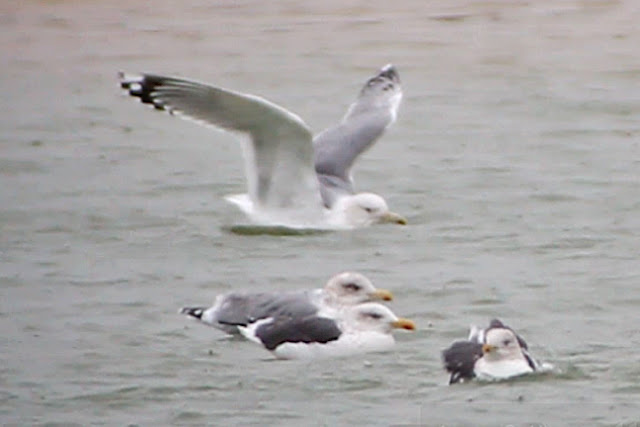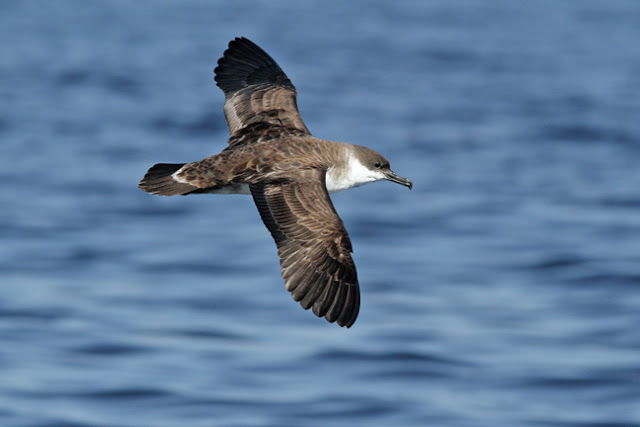A clear blue sky greeted me yesterday morning as I set off to Shawell, but mist soon hampered my progress. By the time I arrived at Shawell the morning mist had thickened considerably leaving me no option but to have a snooze in my car. The gulls had somehow managed to navigate from their night time roost site, as once the mist began to clear I could see thousands of them on the bank opposite me. At first the visibility was too poor to identify the species, but as it improved I managed to spot the second-winter Caspian Gull I first saw on Wednesday.
 |
| Second-winter Caspian Gull |
As you can see the stand out feature is a small white head and a longish thin parallel sided bill. The plumage is typical of a second-winter: a grey mantle and a mostly grey median covert bar on the closed wing. The greater coverts are mainly dark greyey brown and the lesser coverts are brown and dirty white with a slight chequered pattern. The tertials generally stand out as being blacker than other similar species at this age and the white tips show a finger nail type pattern. As you can see this gull shows the typical tertial pattern. The tail had a lovely black band across its complete base. Its legs don't look exceptionally long in the photo above, but in other poses they look thin and long. It can be difficult to assess leg length and shape from photographs, as they can alter from one photograph to the next. The thinness is often only obvious when the gull is facing you, as their legs are not round. Its 'Persil' white head stood out a mile amongst all the other gulls.
I had a great day searching for colour rings, as several thousand Lesser Black-backed Gulls were present. In the end I read 26 colour-rings including some for the first time. Many of them were intermedius LBB Gulls from Norway.
The colour ring on the one below was a challenge to read, as the ring was obviously quite old and starting to wear. It looked like KLAS. This is from the Netherlands.
 |
| LBB Gull Green KLAS |
There are still plenty of Yellow-legged Gulls at the site although fewer first year birds than last weekend. They are not quite so easy to identify now as the juvenile Herring and Lesser Black-backed Gulls are moulting their scapulars and mirroring some of the features that helped separate the young YLGs only a few days ago. Generally the YLG have whiter heads and shorter, thicker and blacker bills, but it can be fun.
A large third or fourth winter YLG caught my eye at the lagoons and stayed around for a while.
 |
| Yellow-legged Gull |
 |
| Yellow-legged Gull |
 |
| Yellow-legged Gull - note the adult like P10 that is just growing |























































